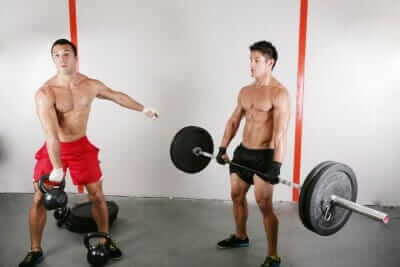The Body Sculpting Bible for Chest and Arms: Men’s Edition stresses that variety is the spice of exercise. Mix them up; emphasize free weights, but supplement with some machines and other equipment (like a fitness ball) to keep your muscles and your mind constantly challenged in different ways.
The weight you select for each exercise depends on the number of repetitions that you need to do for a particular set. First, let’s define those two terms:
A rep, or repetition, is when you perform an exercise (for example, a bicep curl) one time.
A set is made up of a given number of repetitions of the same exercise (for example, a set of chest presses may consist of 12 presses).
In general, you want to keep your repetition range between 6 and 12 maximum. Research shows that the greatest strength and sculpting gains occur when you perform between 6 and 12 repetitions of an exercise with weight that is heavy enough that you feel like you cannot do another repetition with good form past the twelfth one. This is called the point of momentary muscle failure. Weight training is one of the few activities in life where you succeed by failing!
How to Choose Your Weight
Choosing the amount of weight needed for a particular exercise is simple. If you are told to do between 10 and 12 repetitions for one set, then you need to pick a weight where you fail (the point of which completing another repetition in good form becomes impossible) between 10 and 12 reps. This takes a bit of practice, but after a while you will become extremely accurate at choosing the correct weight for a particular repetition range. If you pick a weight that allows you to do more than 12 repetitions, you’ll need to increase the amount of weight being lifted on the next set. If you reach failure before hitting the tenth rep, you’ll need to decrease the amount of weight being lifted on the next set.
NOTE FROM THE TRAINERS: In the past, people were told to determine their one-rep-maximum (which is the heaviest weight you can lift once and only once) and then work at 60 to 80 percent of that weight. This is dangerous for most people (especially beginners), since you may lift a weight that is way too heavy for your joints to handle while trying to determine your one-rep-maximum. Instead of trying to find your one-rep-max, we advise you to select your weights based on the number of repetitions prescribed by the parameters of the workout program.





